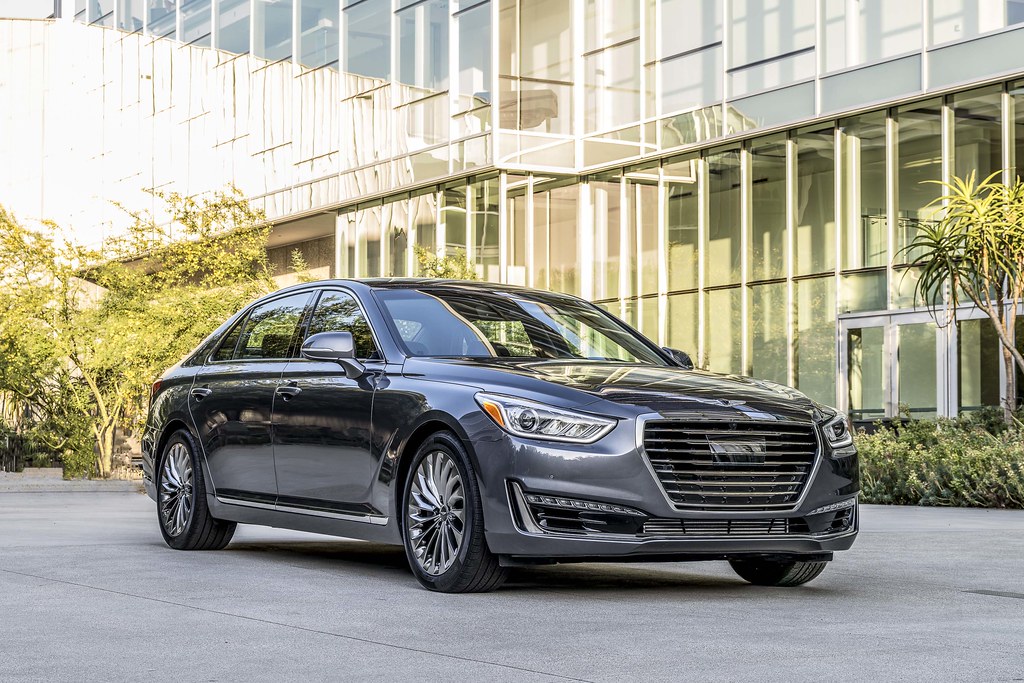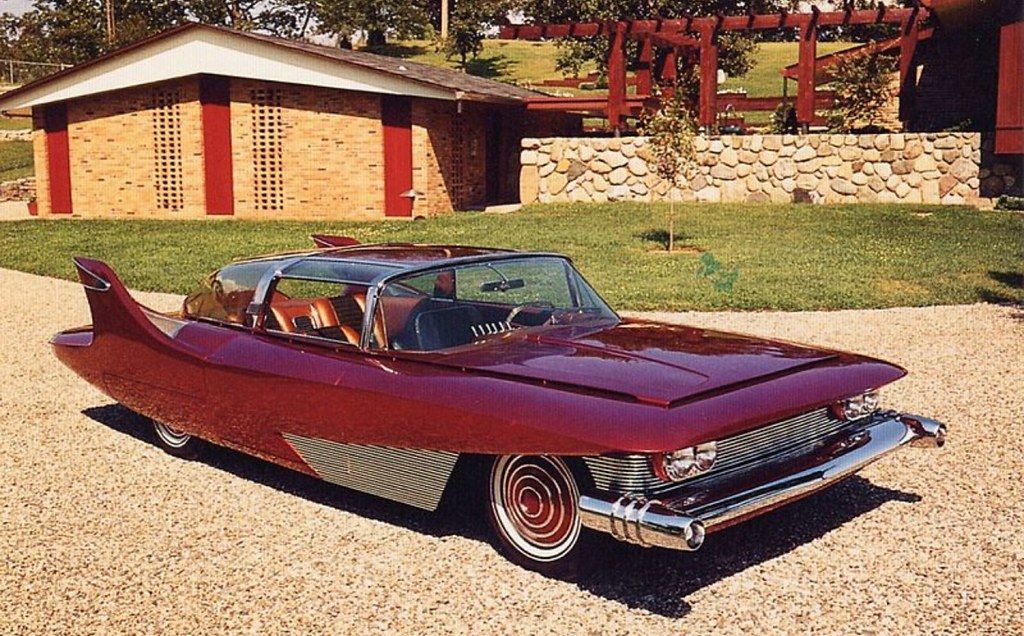
The 1960s marked a profound period of transformation and cultural upheaval, reverberating through fashion, music, and significantly, the automotive industry. This vibrant decade witnessed a pivotal shift in car design, moving away from the extravagant tailfins of the 1950s towards a more refined, yet muscular, aesthetic. It was an era where clean lines and performance-inspired cues began to dominate, forging a new identity for vehicles on roads worldwide.
This dramatic evolution gave rise to some of history’s most visually captivating cars, an age for aesthetics where sleek, streamlined designs converged with powerful engines exuding dominance. Long hoods and short decklids became emblematic, emphasizing potent proportions, while sculpted bodywork and emerging ‘Coke-bottle’ curves hinted at a growing emphasis on aerodynamics. This fertile ground allowed for the simultaneous rise of the aggressive, powerful ‘muscle car’ alongside European sports cars celebrated for their elegant and minimalist designs, creating a decade of rich contrasts where classic elegance truly met youthful rebellion.
Indeed, the 1960s are widely revered as a golden era for automobile enthusiasts, a time when revolutionary designs and engineering marvels left an indelible mark on automotive history. These vehicles were far more than mere transportation; they embodied status, freedom, and relentless innovation, becoming timeless icons cherished by collectors and admirers alike. Even today, these classic cars possess an undeniable charisma, continuing to turn heads and capture imaginations with their enduring cool factor. We embark now on a journey to explore seven of these magnificent machines that truly defined the spirit and innovation of their time.
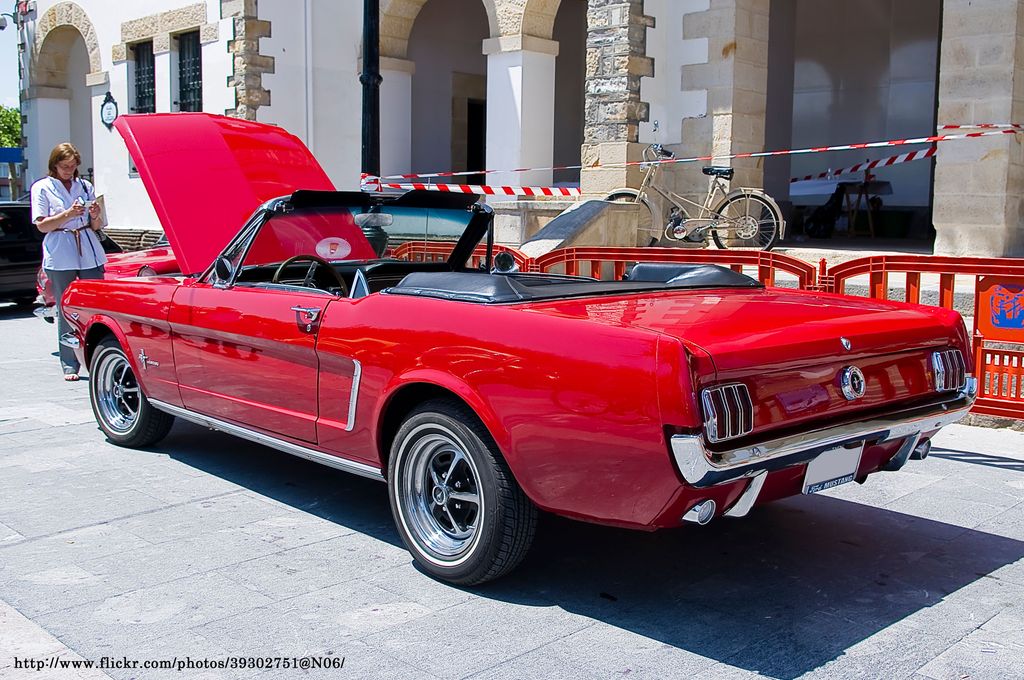
1. **1964 Ford Mustang**The Ford Mustang burst onto the scene in 1964, instantly cementing its place as an American icon and forever altering the automotive landscape. Its sporty design, coupled with accessible power and performance, made it an immediate favorite among car enthusiasts. More than just a vehicle, the Mustang quickly became a symbol of freedom, adventure, and a new, youthful spirit.
Introduced mid-1964, this first-generation Mustang ignited what became known as the ‘pony car’ craze, inspiring countless imitators. Its appealing sporty looks were complemented by a vast array of customization options, allowing owners to personalize their rides to an unprecedented degree. This winning combination made the Mustang an instant hit and a foundational element of American car culture.
The Mustang’s broad accessibility and engaging performance appealed to a remarkably wide audience, solidifying its position as a beloved classic. Its enduring popularity and profound influence on subsequent car design continue to be celebrated by enthusiasts and collectors globally. The Mustang’s legacy stands as a powerful testament to 1960s American automotive innovation, marked by its distinctive style, remarkable versatility, and lasting impact on the entire industry.
It is, without doubt, the American muscle car that springs to mind for many when the term is uttered. The Mustang was simply *the* car everybody wanted during the 1960s, captivating the world with its allure and raw power, setting a benchmark that few could match.
Car Model Information: 1966 Ford Mustang Base
Name: Ford Mustang
Caption: 2018 Ford Mustang GT 5.0
Aka: Ford T5 (Germany)
Manufacturer: Ford Motor Company
Production: March 1964 – present
ModelYears: 1965–present
Class: Unbulleted list
BodyStyle: Unbulleted list
Layout: Front-engine, rear-wheel-drive layout
Categories: 1970s cars, 1980s cars, 1990s cars, 2+2 coupés, 2000s cars
Summary: The Ford Mustang is an American automobiles manufactured and marketed by Ford since 1964, as Ford’s longest nameplate in continuous production. Currently in its seventh generation, it is the fifth-best selling Ford car nameplate. The namesake of the “pony car” automobile segment, the Mustang was developed as a highly styled line of sporty coupes and convertibles derived from existing model lines, initially distinguished by its pronounced “long hood, short deck” proportions.
Originally predicted to sell 100,000 vehicles yearly, the 1965 Mustang became the most successful vehicle launch since the 1927 Model A. Introduced on April 17, 1964 (16 days after the Plymouth Barracuda), over 400,000 units were sold in its first year; the one-millionth Mustang was sold within two years of its launch. In August 2018, Ford produced the 10-millionth Mustang; matching the first 1965 Mustang, the vehicle was a 2019 Wimbledon White convertible with a V8 engine.
The success of the Mustang launch led to multiple competitors from other American manufacturers, including the Chevrolet Camaro and Pontiac Firebird (1967), AMC Javelin (1968), and Dodge Challenger (1970). It also competed with the Plymouth Barracuda, which was launched around the same time. The Mustang also had an effect on designs of coupes worldwide, leading to the marketing of the Toyota Celica and Ford Capri in the United States (the latter, by Lincoln-Mercury). The Mercury Cougar was launched in 1967 as a unique-bodied higher-trim alternative to the Mustang; during the 1970s, it included more features and was marketed as a personal luxury car.
From 1965 until 2004, the Mustang shared chassis commonality with other Ford model lines, staying rear-wheel-drive throughout its production. From 1965 to 1973, the Mustang was derived from the 1960 Ford Falcon compact. From 1974 until 1978, the Mustang (denoted Mustang II) was a longer-wheelbase version of the Ford Pinto. From 1979 until 2004, the Mustang shared its Fox platform chassis with 14 other Ford vehicles (becoming the final one to use the Fox architecture). Since 2005, Ford has produced two generations of the Mustang, each using a distinct platform unique to the model line.
Through its production, multiple nameplates have been associated with the Ford Mustang series, including GT, Mach 1, Boss 302/429, Cobra (separate from Shelby Cobra), and Bullitt, along with “5.0” fender badging (denoting 4.9 L OHV or 5.0 L DOHC V8 engines).
Get more information about: Ford Mustang
Buying a high-performing used car >>>
Brand: Ford Model: Mustang
Price: $32,991 Mileage: 98,811 mi.
Read more about: 9 Legendary Muscle Cars That Vanished: A Nostalgic Drive into an Era’s Fading Glory
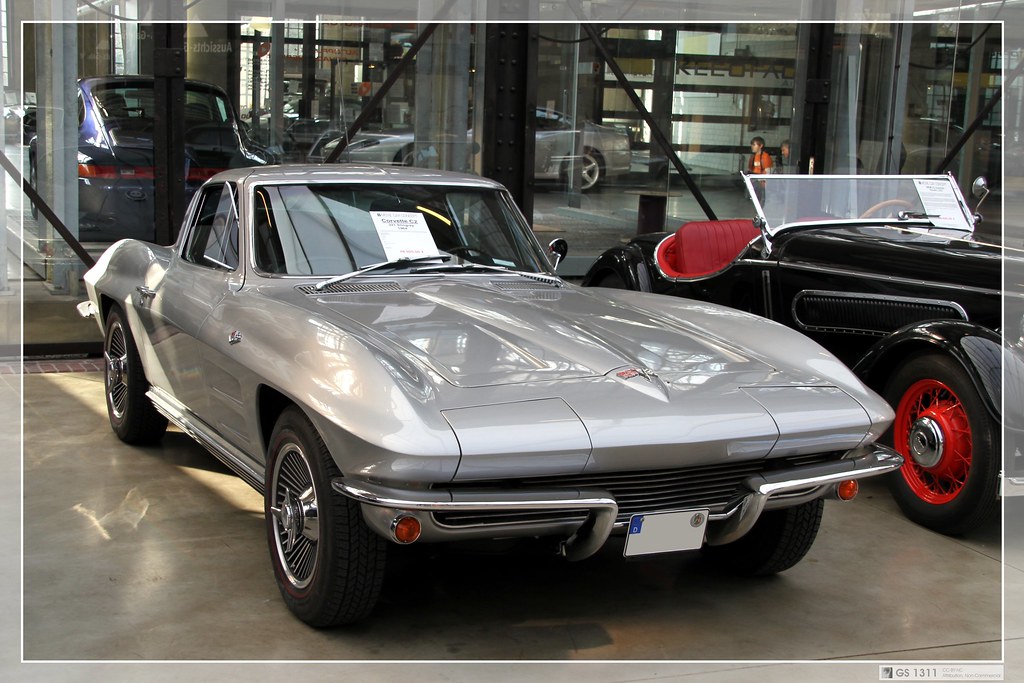
2. **1963 Chevrolet Corvette Sting Ray**The 1963 Chevrolet Corvette Sting Ray remains renowned for its breathtakingly sleek and aerodynamic design, paired with exhilarating high performance. From its very introduction, it emerged as one of the most recognizable and intensely desired American sports cars ever conceived. This generation represented a significant leap forward for the Corvette brand, pushing boundaries in both form and function.
This iconic vehicle, particularly the split-window coupe design, is among the most instantly identifiable Corvettes ever produced. Its lightweight fiberglass body, combined with an innovative independent rear suspension, clearly signaled a tech-savvy future for the American sports car. This blend of advanced materials and sophisticated engineering positioned the Sting Ray as a true pioneer.
The Sting Ray’s harmonious combination of cutting-edge design and impressive performance made it an undisputed standout in the automotive world of its time. Its enduring legacy as a classic is celebrated passionately by collectors who admire its innovation and distinctive style. As a potent symbol of 1960s American automotive creativity, the Sting Ray continues to captivate enthusiasts with its timeless appeal and engineering excellence.
The introduction of the C2 Sting Ray in 1963 represented another defining moment for the American car scene. Powered by a roaring American V8 engine, it was not merely competitive within the domestic market; it bravely challenged and often outclassed the best European sports cars of its era. A few years later, in 1968, the C3 Stingray would continue this lineage of performance and style.
Car Model Information: 2022 Rivian R1T Launch Edition
Name: Chevrolet Corvette (C2)
Caption: 1963 Chevrolet Corvette Sport Coupe
Manufacturer: Chevrolet
Aka: Chevrolet Corvette Sting Ray
Production: August 1962–July 1967
ModelYears: 1963–1967
Platform: Series 0800 (1962-1964),Series 194 (1965-1967)
Chassis: Body-on-frame
Assembly: St. Louis, Missouri
Predecessor: Chevrolet Corvette (C1)
Successor: Chevrolet Corvette (C3)
Class: Sports car
BodyStyle: Convertible (car),coupé
Layout: Front-engine, rear-wheel-drive layout
Engine: {{cvt,327,cuin,L,1,Chevrolet small-block engine#327,V8 engine
Wheelbase: cvt
Length: cvt
Width: cvt
Height: cvt
Weight: cvt
Transmission: manual transmission,manual transmission,Powerglide
Related: Bill Thomas Cheetah
Designer: Larry Shinoda
Categories: 1960s cars, All articles needing additional references, All articles with specifically marked weasel-worded phrases, All articles with unsourced statements, Articles needing additional references from July 2024
Summary: The Chevrolet Corvette (C2) is the second-generation Corvette sports car, produced by the Chevrolet division of General Motors (GM) for the 1963 through 1967 model years.
Get more information about: Chevrolet Corvette (C2)
Buying a high-performing used car >>>
Brand: Chevrolet Model: Corvette Sting Ray
Price: $52,361 Mileage: 42,248 mi.
Read more about: Unleashing American Thunder: The 13 Most Iconic Muscle Cars Ever Built for Speed Enthusiasts
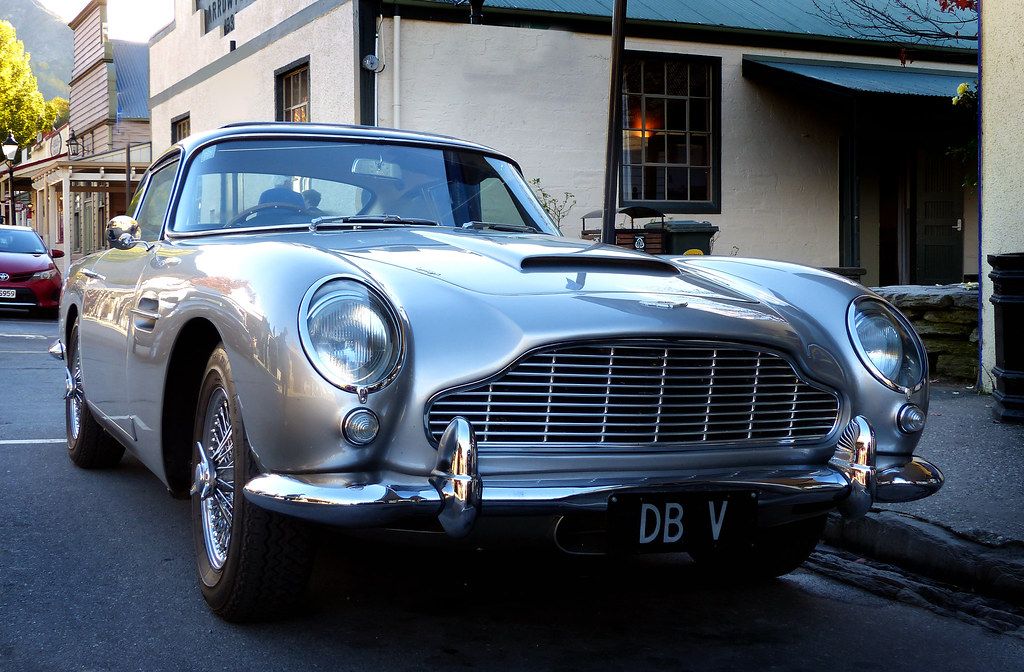
3. **1963 Aston Martin DB5**The 1963 Aston Martin DB5 is inextricably linked with cinematic history, famously associated with James Bond and his thrilling adventures. This iconic grand-tourer immediately epitomized British elegance and luxury upon its launch. Its sleek, distinguished design, coupled with its unparalleled association with the legendary 007, imbued it with an eternally cool status that persists to this day.
Defining British grand-tourer elegance, the DB5 was a dream car for enthusiasts across the globe. Powered by a refined inline-six engine, it offered a blend of potent performance and luxurious comfort. The car’s undeniable allure was significantly amplified by its recurring role alongside the suave secret agent, firmly cementing its status as an unparalleled automotive icon.
The timeless design and exceptional craftsmanship evident in every detail of the DB5 continue to captivate collectors and admirers worldwide. It represents the very pinnacle of 1960s British motoring, embodying the sophistication and performance that have made Aston Martin a revered name throughout the automotive world. It is, quite simply, a masterpiece of automotive artistry.
Beyond its striking aesthetics, the DB5 was also technologically advanced for its period, particularly in terms of its powertrain. It notably sported a five-speed transmission, a feature uncommon at the time, enhancing its driving dynamics. This was complemented by a robust 4.0-liter inline-six engine, producing an impressive 282 horsepower, ensuring its performance matched its sophisticated looks. The superb contours of its chassis continue to inspire modern Aston Martin designs.
Car Model Information: 2022 Rivian R1T Launch Edition
Name: Aston Martin DB5
Manufacturer: Aston Martin
Production: 1963–1965 (1,059 units),2020 (25 units)
Assembly: Newport Pagnell,England
Designer: Carrozzeria Touring Superleggera
Class: Grand tourer
BodyStyle: coupé
Layout: Front-engine, rear-wheel-drive layout
Engine: DOHC,Straight-6,3995 cc
Order: flip
Abbr: on
Powerout: convert
Transmission: ZF Friedrichshafen
Length: 4570 mm
Width: 1680 mm
Wheelbase: 98.0 in
Predecessor: Aston Martin DB4
Successor: Aston Martin DB6
Doors: 2
Weight: 3311 lb
Sp: uk
Categories: Articles with short description, Aston Martin vehicles, CS1: unfit URL, Cars discontinued in 1965, Cars introduced in 1963
Summary: The Aston Martin DB5 is a British grand tourer (GT) produced by Aston Martin and designed by Italian coachbuilder Carrozzeria Touring Superleggera. Originally produced from 1963 to 1965, the DB5 was an evolution of the final series of DB4. The “DB” designation is from the initials of David Brown who built up the company from 1947 onwards.
The DB5 is best-known for its role in the James Bond films. It was first driven by the fictional spy in the film Goldfinger (1964). In 2013, the car featured on a “British Auto Legends” postage stamp issued by the Royal Mail.
Get more information about: Aston Martin DB5
Buying a high-performing used car >>>
Brand: Aston Martin Model: DB5
Price: $52,361 Mileage: 42,248 mi.
Read more about: Navigating the Shifting Market: Nine Iconic Classic Sports Cars Set for Significant Value Declines in 2025
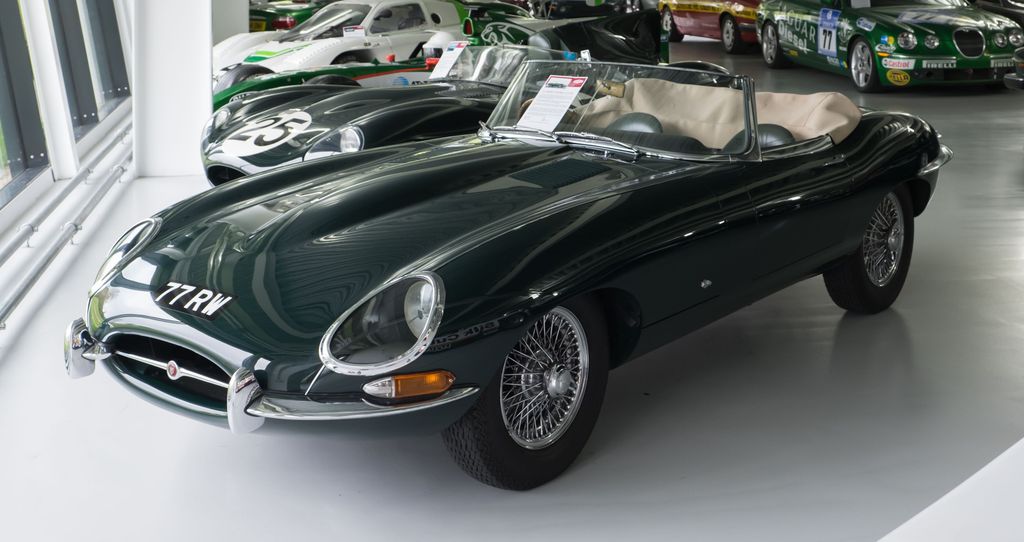
4. **1961 Jaguar E-Type**The 1961 Jaguar E-Type holds a truly legendary status in automotive history, often cited, and indeed famously endorsed by Enzo Ferrari himself, as ‘the most beautiful car ever made.’ Its sensuously smooth lines and powerful engine configurations immediately established it as a quintessential symbol of 1960s style and automotive grace. This declaration from such a formidable rival speaks volumes about its unparalleled design.
Beyond its breathtaking aesthetics, the E-Type was an engineering marvel. It initially featured a smooth inline-six engine, which was later complemented by a V12 option, providing ample power and a distinct aural experience. Equipped with advanced disc brakes, a pioneering feature for its time, the E-Type successfully combined cutting-edge race-car technology with exquisitely graceful proportions, setting new benchmarks for sports car design and performance.
This magnificent automobile instantly captured the imagination of car enthusiasts across the globe, quickly becoming a definitive symbol of 1960s British motoring excellence. Its timeless design has ensured its enduring appeal, while its formidable performance capabilities continue to be celebrated and admired by collectors and discerning enthusiasts. The E-Type transcended mere transportation to become a cultural icon.
As a classic, the E-Type flawlessly embodies the elegance and innovation that so powerfully defined its era. Its harmonious blend of beauty, speed, and advanced engineering has made it a beloved icon of automotive design, securing its lasting place in the annals of motoring history. It remains a testament to Jaguar’s ability to create a car that is both art and machine.
Car Model Information: 1974 Jaguar E-Type XKE
Sp: uk
Name: Jaguar E-Type
Caption: 1961 E-Type Series 1 3.8-Litre, the first production model of this open two-seater
Aka: Jaguar XK-E , Jaguar V-12
Manufacturer: Jaguar Cars
Production: 1961–1974
Class: Sports car
Predecessor: Jaguar XK150
Related: Jaguar D-Type,Jaguar XJ13
Successor: Jaguar XJS
Layout: FMR layout
Assembly: Coventry,England
Designer: Malcolm Sayer
Categories: 1970s cars, 2+2 coupés, All articles with dead external links, All articles with specifically marked weasel-worded phrases, All articles with unsourced statements
Summary: The Jaguar E-Type, or the Jaguar XK-E for the North American market, is a British front mid-engined sports car that was manufactured by Jaguar Cars Ltd from 1961 to 1974. Its sleek appearance, advanced technologies, high performance, and competitive pricing established it as an icon. The E-Type’s claimed 150 miles per hour (240 km/h) top speed, sub-7-second 0 to 60 mph (97 km/h) acceleration, largely unitary body construction, front and rear independent suspension with disc brakes, mounted inboard at the rear, and rack-and-pinion steering spurred industry-wide changes.
The E-Type was based on Jaguar’s D-Type racing car, which had won the 24 Hours of Le Mans for three consecutive years beginning in 1955.
The E-Type employed what was, for the early 1960s, a novel design principle, with a front subframe carrying the engine, front suspension and front bodywork bolted directly to the body tub. No ladder frame chassis, as was common at the time, was needed and as such the first cars weighed only 1,315 kg (2,899 lb).
It is rumored that, on its debut on 15 March 1961, Enzo Ferrari called it “the most beautiful car ever made”, but this statement is not fully confirmed. In 2004, Sports Car International magazine placed the E-Type at number one on their list of Top Sports Cars of the 1960s. In March 2008, the Jaguar E-Type ranked first in The Daily Telegraph’s online list of the world’s “100 most beautiful cars” of all time.
Get more information about: Jaguar E-Type
Buying a high-performing used car >>>
Brand: Jaguar Model: E-Type
Price: $72,900 Mileage: 74,654 mi.
Read more about: Navigating the Shifting Market: Nine Iconic Classic Sports Cars Set for Significant Value Declines in 2025

5. **1961 Mini Cooper**The Mini Cooper, while not inherently a muscle car, carved its own legendary niche after gaining widespread fame in the 1960s. It fundamentally redefined what a small car could be, thanks to its ingeniously compact yet remarkably spacious design and its famously nimble performance characteristics. The Mini proved that excellence could come in a surprisingly small package, challenging established automotive norms.
Its enduring appeal was significantly bolstered by its prominent roles in popular culture and motorsport. The Mini Cooper is famously known for its triumphs in the demanding Monte Carlo Rally, showcasing its surprising resilience and agility. It also achieved global cinematic recognition through its memorable appearance in the classic film “The Italian Job,” further solidifying its playful yet capable image.
This delightful tiny car transcended its humble origins to become an iconic fixture, deeply embedding itself into the fabric of British pop culture throughout the 1960s. Its distinctive, friendly face and compact dimensions made it instantly recognizable and universally adored. It was more than just a car; it was a cultural phenomenon.
Such was its influence that the Mini was voted the second most influential car of the 20th century by the Global Automotive Elections Foundation in 1999, a testament to its groundbreaking design and widespread impact. Its legacy continues to resonate, symbolizing ingenious engineering and spirited motoring that belies its modest size.
Car Model Information: 2022 MINI Hardtop Cooper S
Sp: uk
Caption: 1959 Morris Mini-Minor (first one built)
Name: Mini
Aka: Austin 850,Rover Mini,Austin Cooper,Austin Mini,Austin Partner,Austin Seven,Innocenti Mini,Leyland Mini,Morris 850,Morris Mascot,Morris Mini Minor,Riley Elf,Wolseley 1000 (South Africa),Wolseley Hornet
Layout: Front-engine, front-wheel-drive layout
Manufacturer: British Motor Corporation,British Leyland,Rover Group
Production: 1959–2000 (5.38 million)
Class: City car
BodyStyle: sedan (car),convertible,Station wagon,sedan delivery,coupe utility
Engine: BMC A-series engine,Straight-four engine
Designer: Alec Issigonis,John Sheppard (car designer)
Transmission: 4-speed manual,AP automatic transmission,5-speed manual (optional extra on some later models)
Length: cvt,cvt,cvt
Width: cvt
Height: cvt
Weight: cvt
Wheelbase: cvt,cvt
Related: Mini Moke,Austin Metro,Innocenti Mini,Mini Wildgoose,Mini Marcos
Successor: Austin Metro,Mini Hatch
Assembly: Panmure, New Zealand
Categories: 1960s cars, 1970s cars, 1980s cars, 1990s cars, 2000s cars
Summary: The Mini is a very small two-door, four-seat car, produced for four decades over a single generation, with many names and variants, by the British Motor Corporation (BMC) and its successors British Leyland and the Rover Group, and finally (briefly) under BMW ownership. Minis were built as fastbacks, estates, convertibles, and various other body styles. Minus a brief 1990s hiatus, from 1959 into 2000, an estimated 5.38 million of all variations combined were built, and the Mini’s engines also powered another 2 million Mini Metros, though the Mini eventually outlasted its successor.
Initially, the Mini was marketed under the Austin and Morris names, as the Austin Seven and Morris Mini-Minor; the Austin Seven was renamed Austin Mini in 1962 and Mini became a marque in its own right in 1969. Retrospectively, the car is known as the “Classic Mini” to distinguish it from the modern MINI family of vehicles produced since 2001 by German carmaker BMW, who took ownership of the Mini name following the sale of Rover Group in 2000.
This distinctive two-door car was designed for BMC by Sir Alec Issigonis. Its space-saving transverse engine and front-wheel drive layout – allowing 80% of the area of the car’s floorpan to be used for passengers and luggage – influenced a generation of car makers. The front-wheel-drive, transverse-engine layout were used in many other “supermini” style car designs such as Honda N360 (1967), Nissan Cherry (1970), and Fiat 127 (1971). The layout was also adapted for larger subcompact designs. In 1999, the Mini was voted the second-most influential car of the 20th century, behind the Ford Model T, and ahead of the Citroën DS and Volkswagen Beetle. It is also considered an icon of 1960s British popular culture.
The Mini Mark I had three major UK updates: the Mark II, the Clubman, and the Mark III. Within these was a series of variations, including an estate car, a pick-up, a van, and the Mini Moke, a jeep-like buggy. The performance versions, the Mini Cooper and Cooper “S”, were successful as both race and rally cars, winning the Monte Carlo Rally in 1964, 1965, and 1967. The Mini was manufactured in England at the Longbridge plant in Birmingham located next to BMC’s headquarters and at the former Morris Motors plant at Cowley, as well as in Australia (Victoria Park/Zetland BMC Australia factory) and later also in Spain (Authi), Belgium, Italy (Innocenti, as the Innocenti Mini), Chile, Malta, Portugal, South Africa, Uruguay, Venezuela, and Yugoslavia (IMV). In 1980, British Leyland launched the Mini’s follow-up, the Austin Metro, however the Mini outlasted it and continued to be produced at Longbridge until October 2000.
Get more information about: Mini
Buying a high-performing used car >>>
Brand: Mini Model: Cooper
Price: $21,499 Mileage: 22,095 mi.
Read more about: Lou Cutell Remembered: A Deep Dive into the Illustrious Career of a Beloved Character Actor, from Seinfeld’s ‘Assman’ to Broadway Stages

6. **1966 Alfa Romeo Spider**Launched in 1966, the Alfa Romeo Spider is an exquisite testament to Italian automotive artistry, celebrated universally for its stylish design and the sheer joy it offers through its engaging driving experience. It quickly established itself as the quintessential Italian sports car of the 1960s, embodying a passionate approach to motoring that remains captivating today. Every curve and line speaks of its rich heritage.
This beautiful machine was further immortalized by its prominent role in the acclaimed film ‘The Graduate’ in its 1967 ‘Duetto’ iteration. Its design, a masterwork by Pininfarina, featured delicate lines and an inviting open-top configuration that collectively offered an irresistible allure. The Spider truly captured the very essence of Italian motoring elegance, inviting drivers to experience the road with unbridled passion.
Both the performance and the undeniable style of the Alfa Romeo Spider quickly made it a firm favorite among sports car enthusiasts. Its legacy as a classic Italian roadster continues to be celebrated with fervor, with collectors eagerly valuing its unique blend of breathtaking beauty and sophisticated engineering. It is a car that truly stirs the soul.
Even decades later, the Duetto, and indeed the entire Spider lineage, remains a potent icon of 1960s automotive fashion. It is widely admired not only for its timeless design, which continues to look fresh and exciting, but also for the pure, unadulterated driving pleasure it consistently delivers. It is a piece of art that you can drive.
Car Model Information: 2021 Volkswagen Tiguan 2.0T SE R-Line Black
Name: Alfa Romeo Spider
Caption: Alfa Romeo Spider Series 2 (“Coda Tronca”)
Aka: Alfa Romeo “Duetto”
Manufacturer: Alfa Romeo
Assembly: Grugliasco,Turin
Production: 1966–1993
ModelYears: 1966–1994
Class: Sports car
Layout: Front-engine, rear-wheel-drive layout
BodyStyle: Roadster (automobile)
Related: Alfa Romeo Giulia,Alfa Romeo 105/115 Series Coupés
Designer: Aldo Brovarone
Predecessor: Alfa Romeo Giulietta (750/101)
Successor: Alfa Romeo GTV & Spider
Sp: uk
Categories: 1970s cars, 1980s cars, 1990s cars, Alfa Romeo vehicles, All articles needing additional references
Summary: The Alfa Romeo Spider (105/115 series) is a two-seater, front-engined, rear-drive roadster manufactured and marketed by Alfa Romeo from 1966 to 1994 in four distinct generations, or “series”, each with modifications ranging from modest to extensive.
As successor to the Giulia Spider, the Spider remained in production for almost three decades. The first three series were assembled by Pininfarina in Grugliasco and the fourth series in San Giorgio Canavese. The last Spider of that series was manufactured in April 1993—the last rear-wheel drive Alfa Romeo before the Alfa Romeo 8C Competizione of 2007.
In 2012, FCA Italy and Mazda studied the possibility of jointly developing a new Spider for 2015 based on the Mazda MX-5 platform. Ultimately, FCA and Mazda chose to manufacture a modern interpretation of the Fiat 124 Sport Spider rather than reviving the Alfa Romeo Spider.
Get more information about: Alfa Romeo Spider
Buying a high-performing used car >>>
Brand: Alfa Romeo Model: Spider
Price: $16,773 Mileage: 68,625 mi.
Read more about: A High-Octane Flashback: Unveiling 14 Iconic Cars That Revved Up the Unforgettable ’70s
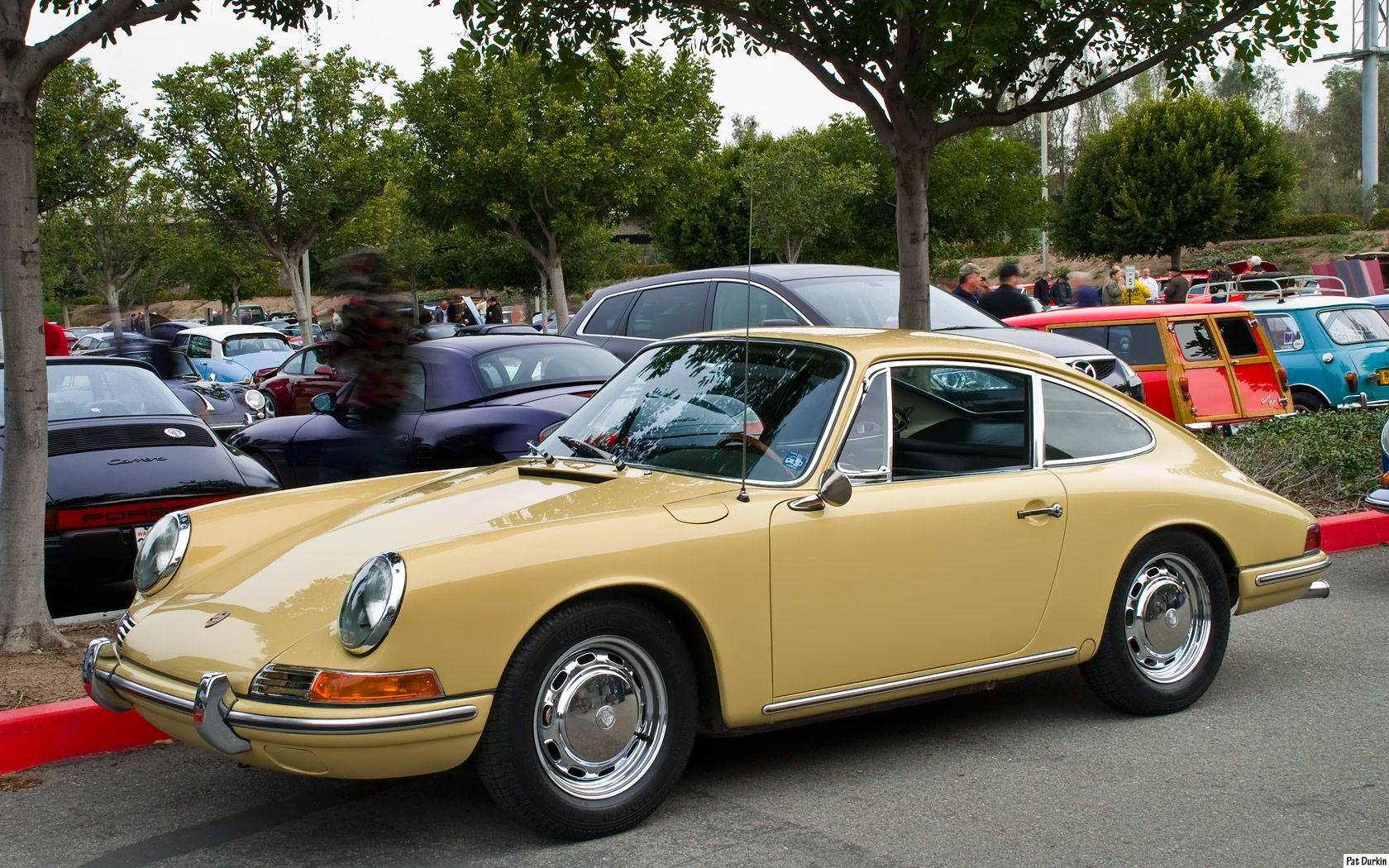
7. **1964 Porsche 911**The Porsche 911, first introduced in 1964 (though initially launched as the 901 in 1963), swiftly rose to become a timeless sports car, initiating a legendary production run that continues to this day. It is instantly recognizable for its distinctive design and its unique rear-engine layout, firmly establishing it as a staple of automotive excellence and engineering ingenuity. This initial model laid the foundation for an enduring dynasty.
Though briefly known as the 901, the Porsche 911 became an icon almost overnight, setting a new standard for sports car performance and design. Its groundbreaking rear-engine configuration, coupled with an innovative air-cooled flat-six engine, laid the fundamental groundwork for over six decades of continuous 911 evolution. This engineering choice became a signature of the brand.
The 911’s unmistakably timeless silhouette and its inherent engineering excellence have combined to make it a perennial favorite among driving enthusiasts worldwide. Its sustained legacy as a high-performance sports car ensures its unwavering place as an enduring classic in the automotive pantheon. The 911 isn’t just a car; it’s a driving philosophy encapsulated in metal.
Debuting at the 1963 Frankfurt Motor Show, the 911 garnered significant attention for being one of the first production cars to sport an air-cooled engine of its era. This innovation kickstarted the company’s hugely successful boxer configuration, a design cherished by Porsche fans globally. The original 911 boasted impressive handling capabilities and possessed a captivating beauty that made it impossible not to fall in love with its form and function.
Car Model Information: 2024 Porsche 911 Turbo
Name: Porsche 911
Caption: The 1 millionth 911 produced on display at Volkswagen Group Forum, Berlin
Designer: Ferdinand Alexander Porsche
Manufacturer: Porsche
Production: September 1964 – present
Assembly: Stuttgart,Baden-Württemberg
Class: Sports car
BodyStyle: unbulleted list
Related: unbulleted list
Layout: Rear-engine design,rear-wheel drive
Predecessor: Porsche 356
Categories: 1970s cars, 1980s cars, 1990s cars, 2+2 coupés, 2000s cars
Summary: The Porsche 911 model series (pronounced Nine Eleven or in German: Neunelf) is a family of German two-door, high performance rear-engine sports cars, introduced in September 1964 by Porsche AG of Stuttgart, Germany. Now in its eighth generation, all 911s have a rear-mounted flat-six engine, and usually 2+2 seating, except for special 2-seater variants. Originally, 911s had air-cooled engines, and torsion bar suspension, but the 911 has been continuously enhanced, and evolved across generations. Though the 911 core concept has remained largely unchanged, water-cooled engines were introduced with the 996 series in 1998, and front and rear suspension have been replaced by Porsche-specific MacPherson suspension up front, and independent multi-link rear suspension.
The 911 has been raced extensively by private and factory teams, in a variety of classes. It is among the most successful competition cars. In the mid-1970s, the naturally aspirated 911 Carrera RSR won world championship races including Targa Florio and the 24 Hours of Daytona. The 911-derived 935 turbo also won the 24 Hours of Le Mans in 1979. Porsche won the World Championship for Makes in 1976, 1977, 1978, and 1979 with 911-derived models.
In a 1999 poll to determine the Car of the Century, the 911 ranked fifth — one of two in the top five that had remained continuously in production (the original Beetle remained in production until 2003). The one millionth example was manufactured in May 2017 and is in the company’s permanent collection.
Get more information about: Porsche 911
Buying a high-performing used car >>>
Brand: Porsche Model: 911
Price: $274,995 Mileage: 1,524 mi.
Read more about: The Smart Money’s Secret: 8 Undervalued Classic Cars Experts Say Are Poised for Significant Appreciation

8. **Ford GT40 (1964)**The 1964 Ford GT40 emerged as a formidable symbol of American racing dominance, specifically designed to challenge and conquer the endurance racing circuits where European marques had long reigned supreme. This high-performance marvel, developed in 1964, was Ford’s direct answer to Ferrari’s long-standing success at the demanding 24 Hours of Le Mans. Its very creation was a statement, aimed at proving American engineering prowess on the international stage.
The GT40 quickly gained global attention for its incredible beauty and impressive performance on the racetrack. Initially powered by a 4.2-liter V8 engine, it didn’t immediately achieve the desired success. However, under the guidance of the legendary Carroll Shelby, the car was reimagined with a potent 427 V8 engine, transforming it into an unstoppable force that dominated not only Le Mans, but also the 24 Hours of Daytona and the 12 Hours of Sebring.
Its legacy is defined by an unparalleled winning streak, securing victory at the 24 Hours of Le Mans for four consecutive years between 1966 and 1969. The GT40’s radical low-slung design, characterized by its aerodynamic lines and purposeful stance, was a testament to form following function, embodying a singular focus on speed and efficiency. It remains a powerful icon of racing innovation and engineering excellence, forever etched in automotive history.
This vehicle wasn’t just about winning races; it represented a pivotal moment where an American manufacturer successfully broke European dominance in the most prestigious endurance events. The Ford GT40 truly captured the imagination of automotive enthusiasts worldwide, embodying a spirit of audacious ambition and technical mastery that continues to inspire.
Car Model Information: 1966 Ford GT40
Name: Ford GT40
Caption: Ford GT40 Mk.I in JWA Gulf Oil racing colors
Manufacturer: Ford Advanced Vehicles,John Wyer,Kar Kraft,Holman-Moody,Shelby American
Production: 1964–1969
Assembly: Slough,Los Angeles
Designer: Ron Bradshaw
Class: Group 4 (racing),Group 5 (racing),Group 6 (racing)
BodyStyle: coupé
Layout: MR layout
Engine: Cubic inch,289 CID (4737 cc) V-8,302 CID (4942 cc) V-8,427 CID (6997 cc) V-8
Transmission: Manual transmission
Wheelbase: 95 in
Abbr: on
Length: 160 in
Width: 70 in
Height: 40.5 in
Weight: convert
Successor: Ford P68
Sp: uk
Categories: 24 Hours of Le Mans race cars, All Wikipedia articles needing clarification, All articles needing additional references, All articles that may contain original research, All articles with specifically marked weasel-worded phrases
Summary: The Ford GT40 is a high-performance mid-engined racing car originally designed and built for and by the Ford Motor Company to compete in 1960s European endurance racing and the World Sportscar Championship. Its specific impetus was to beat Scuderia Ferrari, which had won the prestigious 24 Hours of Le Mans race for six years running from 1960 to 1965. As rules of the time required that GT cars were built in dozens and sold, around 100 cars in total have been made, mostly as 289 cu in (4.7 L) V8-powered Mk Is, of which at least 50 were made in 1965, which allowed FIA-homologation as Group-4-Sportscar for 1966 until 1971. This gave the old MK.I car of Gulf-Wyer the chance to enter and win Le Mans in 1968 and 1969 after prototypes had been limited to 3 litre, with the performance of the Ford 7-litre-V8 in the factory 1966 Mk.II and 1967 Mk.IV prototypes causing this rule change, which also banned the 4-litre V12 Ferrari 330P4 and others after 1967. The Mk.III designation was used for some road-legal cars.
The Ford GT40 debuted in 1964, and improvements in 1965 led to Ford winning World Championships categories from 1966 to 1968. The first Le Mans win came in 1966 with three 427 cu in (7.0 L) powered Mk.II prototypes crossing the finish line together, the second in 1967 with the same engine now in quite different US-built Mk.IV prototype chassis similar to the “J-car” mule. In order to lower ever-higher race top speeds, a rule change from 1968 onwards limited prototypes to 3.0 litre Formula 1 engines; the sportscar “loophole”, however, allowed the private JW “Gulf Oil” team to win at Le Mans in 1968 and 1969 running a Mk.I with a 5.0 litre engine.
The GT40 effort began in Britain in the early 1960s when Ford Advanced Vehicles began to build the Mk I, based upon the British Lola Mk6, in Slough, UK. After disappointing race results, the engineering team was moved in 1964 to Dearborn, Michigan, US, to design and build cars by its advanced developer, Kar Kraft. All chassis versions were powered by a series of American-built Ford V8 OHV engines modified for racing.
In the 1966 Le Mans, the GT40 Mk II car broke Ferrari’s winning streak, making Ford the first American manufacturer to win a major European race since Jimmy Murphy’s Duesenberg in the 1921 French Grand Prix. In the 1967 Le Mans, the GT40 Mk IV car became the only car developed and assembled entirely (both chassis and engine) in the United States to achieve the overall win at Le Mans.
Get more information about: Ford GT40
Buying a high-performing used car >>>
Brand: Ford Model: GT40
Price: $110,000 Mileage: 13,350 mi.
Read more about: The 13 Most Beautiful Sports Cars Ever Designed: A Masterclass in Automotive Art and Engineering

9. **Ferrari 250 GTO (1962)**The 1962 Ferrari 250 GTO stands as one of the most iconic and undeniably beautiful creations in the automobile world, a car that quickly became a legend on the racing circuit. Produced for a short, intense period between 1962 and 1964, it remains a paragon of Italian sports car design and engineering, captivating enthusiasts with its astonishing two-door Berlinetta body style.
Beyond its striking aesthetics, the 250 GTO was a formidable competitor on the track, dominating racing in its class. Its combination of breathtaking performance and exquisite beauty continues to captivate collectors and admirers, solidifying its status as an automotive icon. The car’s insatiably curvy lines spoke of dreams come true, making it an instant object of desire for anyone with an appreciation for automotive artistry.
Such is its legendary status that the 1962 Ferrari 250 GTO is not only one of the most coveted cars of its decade but also one of the most valuable automobiles on the planet. Its stratospheric auction prices have become legendary, reflecting its unparalleled place in automotive history. As a classic, it represents the pinnacle of 1960s Italian sports car design, admired for both its racing success and its timeless elegance.
The 250 GTO embodies the very essence of automotive greatness, blending unparalleled racing heritage with a design that remains breathtakingly gorgeous even today. It didn’t just win races; it redefined what a high-performance, aesthetically perfect machine could be, leaving an indelible mark on the annals of motoring history.
Car Model Information: 2021 Volkswagen Tiguan 2.0T SE R-Line Black
Name: Ferrari 250 GTO
Caption: 1963 Ferrari 250 GTO (chassis 4153GT)
Manufacturer: Ferrari
Production: 1962–1964,(36 produced)
Designer: Giotto Bizzarrini,Scaglietti
Class: Sports car
BodyStyle: berlinetta
Related: Ferrari 330#330 LMB,Ferrari P#250 LM
Layout: FR layout
Engine: 2,953 cc,Ferrari Colombo engine#250,Overhead camshaft#Single Overhead camshatf,Weber carburetor,Compression ratio
Powerout: 300 PS
Abbr: on
Order: flip @ 5500 rpm
Transmission: Manual transmission
Wheelbase: 2400 mm
Length: 4325 mm
Width: 1600 mm
Height: 1210 mm
Weight: convert
Predecessor: Ferrari 250 GT SWB
Successor: Ferrari 250 LM,Ferrari 288 GTO
Categories: All articles lacking reliable references, All articles needing additional references, All articles with bare URLs for citations, All articles with unsourced statements, Articles lacking reliable references from March 2022
Summary: The Ferrari 250 GTO is a grand tourer produced by Ferrari from 1962 to 1964 for homologation into the FIA’s Group 3 Grand Touring Car category. It was powered by Ferrari’s Tipo 168/62 Colombo V12 engine. The “250” in its name denotes the displacement in cubic centimeters of each of its cylinders; “GTO” stands for Gran Turismo Omologato, Italian for “Grand Touring Homologated”.
Just 36 of the 250 GTOs were manufactured between 1962 and 1964. This includes 33 cars with 1962–63 bodywork (Series I) and three with 1964 (Series II) bodywork similar to the Ferrari 250 LM. Four of the older 1962–1963 (Series I) cars were updated in 1964 with Series II bodies.
When new, the 250 GTO cost $18,000 in the United States, with buyers personally approved by Enzo Ferrari and his dealer for North America, Luigi Chinetti. This model has since become highly desired by automobile collectors and sales have repeatedly set price records. The current record for world’s most expensive Ferrari was set in June 2018 when a 1963 250 GTO (chassis 4153GT) was sold in a private sale for $70 million.
In 2004, Sports Car International placed the 250 GTO eighth on their list of Top Sports Cars of the 1960s, and nominated it the top sports car of all time. Similarly, Motor Trend Classic placed the 250 GTO first on a list of the “Greatest Ferraris of All Time”. Popular Mechanics named it the “Hottest Car of All Time”.
Get more information about: Ferrari 250 GTO
Buying a high-performing used car >>>
Brand: Ferrari Model: 250 GTO
Price: $16,773 Mileage: 68,625 mi.
Read more about: How Well Do You Know Classic Cars? Try Taillight Identification Quiz

10. **Shelby Cobra (1962)**Carroll Shelby’s masterstroke, the 1962 Shelby Cobra, was an audacious blend of American power and British sports car design, a combination that resulted in one of the most outstanding and brutally fast cars of all time. This legendary machine, produced between 1962 and 1967, ingeniously merged a lightweight AC Ace body from Britain with a fire-breathing, Ford-sourced V8 engine, forging a new paradigm for high-performance sports cars.
The Shelby Cobra wasn’t merely a beautiful car; it was a potent competitor to virtually everything else on the road, quickly earning its reputation for aggressive styling and ferocious performance. Its combination of agility, derived from its light body, and raw American V8 power made it a legend on the track, symbolizing American ingenuity in a fierce era of automotive competition.
Over its production run, the Cobra received numerous upgrades, progressively enhancing its capabilities. At its peak, particularly with the 7.0-liter Ford 427 engine producing 485 horsepower, it was capable of reaching a top speed of 185 mph and accelerating from 0 to 60 mph in a blistering 4.5 seconds. These figures were truly astounding for the era, cementing its place as an engineering marvel.
The Cobra’s enduring legacy is celebrated by collectors and racers alike, admired for its performance and timeless design. Its iconic form has been so influential that it remains one of the most replicated designs in automotive history, a testament to its profound impact and the sheer excitement it continues to evoke. The success of this car even prompted Shelby America to produce a limited edition of the original 427 Cobra in 2014 for the car’s 50th anniversary.
Read more about: Sculpted for the Ages: MotorTrend’s Definitive Look at the Most Visually Arresting Cars from Every Iconic Marque

11. **Lamborghini Miura (1966)**The 1966 Lamborghini Miura arrived on the scene with a dramatic flair, widely considered to be the first true ‘supercar’ and a machine that fundamentally redefined exotic performance and styling. Its groundbreaking mid-engine layout, featuring a powerful V12 engine positioned directly behind the driver, was a revolutionary design choice that set a new standard for sports cars and earned it an indelible place in automotive history.
Designed by the visionary Marcello Gandini, the Miura’s dramatic silhouette captivated the world with its unparalleled beauty and aggressive elegance. This stunning machine, which quickly rose to fame in 1966, was celebrated for both its incredible aesthetic and its jaw-dropping performance. It represented a bold new direction for high-performance vehicles, transcending conventional sports car designs.
Powered by a 3.9-liter V12 engine, the Miura was not only one of the fastest production cars of its time but also the progenitor of the supercars we know today. Its combination of breathtaking beauty and formidable performance continues to inspire designers and enthusiasts alike, solidifying its position as an automotive masterpiece.
On par with legendary vehicles like the Ferrari 250 GTO and the Jaguar E-Type, the Lamborghini Miura stands without doubt as one of the most beautiful creations of the automobile world. As a classic, it remains a potent symbol of 1960s Italian automotive artistry, celebrated for its innovation and the sheer elegance it brings to the world’s most scenic roads.
Read more about: Golden Icons: Valuable Cars of the 1960s and Their Enduring Legacy

12. **Toyota 2000GT (1967)**The 1967 Toyota 2000GT was a revelation, a sleek coupe that emphatically put Japan on the global sports-car map, demonstrating a level of design and craftsmanship previously unassociated with Japanese manufacturers in this elite segment. Introduced in 1967, this car quickly became celebrated for its elegant styling, impressive performance, and meticulous attention to detail.
Initially built as a show car in 1965, the immense positive reception led to its mass production, showcasing Toyota’s commitment to excellence and performance. The 2000GT featured a Yamaha-tuned 2.0-liter inline-six engine, producing 150 horsepower, which confidently put it on par with other esteemed sports cars of the period. This sophisticated powertrain, combined with a front-mid engine and rear-wheel-drive configuration, delivered a truly engaging driving experience.
Its stunning silhouette, notably inspired by the iconic Jaguar E-Type, made it an instant hit and eventually the first Japanese car prized by collectors worldwide. The car’s success in international racing further cemented its status and distinctive styling, making it a powerful symbol of Japanese automotive innovation and engineering capability.
The 2000GT’s limited production numbers make it incredibly collectible, reinforcing its legacy as a groundbreaking sports car. As a classic, it stands as a testament to the global reach of 1960s automotive design, admired for its beauty, advanced engineering, and its pivotal role in elevating the perception of Japanese automobiles on the world stage.
Read more about: The Unforgettable Classics: 13 Legendary Cars Car Enthusiasts Deeply Regret Letting Go Of, and Their Skyrocketing Values Today
13. **Chevrolet Camaro (1967)**The 1967 Chevrolet Camaro burst onto the American car scene as Chevrolet’s spirited answer to the wildly popular Ford Mustang, instantly becoming a formidable contender in the burgeoning muscle car segment. Introduced in 1967, its muscular appearance and potent engine options made it an instant hit, capturing the imagination of a new generation of American drivers.
While it didn’t ultimately surpass the iconic Mustang in overall fame, the Chevrolet Camaro certainly had everything it needed to challenge for supremacy during the Golden Era of American muscle cars. Built on a robust GM F-body platform, this stunning rear-wheel-drive beast, weighing approximately 3,000 pounds, was available as a two-door coupe or convertible, offering versatility alongside its power.
Powering these machines were various V8 options, with the most capable being a ferocious 6.5-liter unit, delivering exhilarating performance that thrilled enthusiasts. The first generation of the Chevrolet Camaro, launched in 1967, continued production until the end of the decade, establishing a strong foundation for what would become one of America’s most enduring automotive legacies.
The Camaro embodied the aggressive spirit of 1960s performance, blending raw power with an undeniable swagger. Its legacy has continued through multiple redesigns, with its most modern iteration still in production today, a testament to its lasting appeal and impact on American car culture.
Car Model Information: 2018 Chevrolet Camaro 1LS
Name: Chevrolet Camaro
Manufacturer: Chevrolet
Production: 1966–2002,2009–2023
ModelYears: 1967–2002,2010–2024
Class: Pony car
BodyStyle: coupe,convertible
Platform: GM F platform,GM Zeta platform,GM Alpha platform
Layout: Front-engine, rear-wheel-drive layout
Categories: 1970s cars, 1980s cars, 1990s cars, 2+2 coupés, 2000s cars
Summary: The Chevrolet Camaro is a mid-size American automobile manufactured by Chevrolet, classified as a pony car. It first went on sale on September 29, 1966, for the 1967 model year and was designed to compete with the Ford Mustang. The Camaro shared its platform and major components with the Firebird, produced by General Motors’ Pontiac division that was also introduced for the 1967 model year.
Four distinct generations of the Camaro were developed before production ended in 2002. The nameplate was revived on a concept car that evolved into the fifth-generation Camaro; production started on March 16, 2009.
Production of the sixth generation of the Camaro ended in December 2023, for the 2024 model year.
Get more information about: Chevrolet Camaro
Buying a high-performing used car >>>
Brand: Chevrolet Model: Camaro
Price: $19,125 Mileage: 69,196 mi.
Read more about: The Smart Money’s Secret: 8 Undervalued Classic Cars Experts Say Are Poised for Significant Appreciation

14. **Dodge Charger (1966)**The 1966 Dodge Charger stands as a quintessential American muscle car, instantly recognizable for its distinct styling and the availability of powerful Hemi engines that defined an era of automotive excess and performance. First released in 1966, it quickly carved out its place as a cultural icon, famously immortalized later as the General Lee in “The Dukes of Hazzard.”
This legend of the muscle car world came with superb design lines, characterized by a fastback body and a full-width grille. The second generation, introduced in 1968, further refined this aesthetic with an iconic unbroken front grille that ingeniously concealed the headlights when not in use, adding to its menacing and purposeful appearance.
The classic Charger embodied the raw power and bold styling that enthusiasts craved, making it a beloved symbol of American automotive design. Its powerful presence on the road was matched by its formidable capabilities, appealing to those who sought both style and uncompromising performance.
Even today, while modern versions of the Dodge Charger continue to be popular and retain a similarly menacing look, the classic version from the 1960s holds a special place in the hearts of purists. It represents a golden age where design and brute force converged to create truly unforgettable machines.
Car Model Information: 2020 Dodge Charger R/T
Name: Dodge Charger
Caption: 1969 Dodge Charger
Manufacturer: Dodge
Production: 1966–1978,1981–1987,2005–present
ModelYears: 1966–1978,1982–1987,2006–present
Categories: 1960s cars, 1970s cars, 1980s cars, 2000s cars, 2010s cars
Summary: The Dodge Charger is a model of automobile marketed by Dodge in various forms over eight generations since 1966.
The first Charger was a show car in 1964. A 1965 Charger II concept car resembled the 1966 production version.
In the United States, the Charger nameplate has been used on mid-size cars, personal luxury coupes, subcompact hatchbacks, and full-size sedans.
Get more information about: Dodge Charger
Buying a high-performing used car >>>
Brand: Dodge Model: Charger
Price: Not Priced Mileage: 71,585 mi.
Read more about: From Rust to Roar: 14 Vintage & Classic Cars Reborn Through Expert Restoration
15. **BMW 2002 (1968)**The 1968 BMW 2002 launched a quiet revolution, crediting itself with establishing BMW’s enduring reputation as a maker of sporty, driver-oriented cars that perfectly balanced practicality with dynamic performance and stylish looks. This elegant yet assertive vehicle quickly became one of the most sought-after vintage cars in the world, setting the standards for luxury sport vehicles for decades to come.
The gorgeous-looking 02 series, produced between 1966 and 1977, came fitted with a reliable M10 four-cylinder engine, which provided ample power for its lightweight chassis. What truly set the BMW 2002 apart was its impressive handling capabilities, making it an ideal platform not just for spirited road driving but also for competitive racing, where it proved its mettle repeatedly.
Combining Germanic precision engineering with a minimalist, functional design aesthetic, the BMW 2002 was a car designed for drivers who appreciated nimble performance and communicative feedback. It represented a shift towards smaller, more agile vehicles that still offered a premium driving experience, contrasting with the larger, more opulent American cars of the period.
Its enduring appeal lies in this harmonious blend of engineering excellence, engaging dynamics, and timeless design. The BMW 2002 continues to be cherished by collectors and enthusiasts who recognize its pivotal role in shaping BMW’s brand identity and its lasting contribution to the world of performance automobiles.
Car Model Information: 1971 BMW 2002
Name: BMW 02 Series
Caption: BMW 1600-2
Production: 1966–1977,837,038 units
Assembly: Munich
Class: Compact executive car
BodyStyle: 2-door coupé , 2-door convertible , 3-door hatchback
Layout: Front-engine, rear-wheel-drive layout
Engine: ubl
Wheelbase: cvt
Length: cvt
Width: cvt
Height: cvt
Weight: cvt
Transmission: 4-speed manual , 5-speed manual ,3-speed automatic
Successor: BMW 3 Series (E21)
Designer: Giovanni Michelotti
Manufacturer: BMW
Categories: 1970s cars, Articles with short description, BMW vehicles, CS1 German-language sources (de), CS1 Italian-language sources (it)
Summary: The BMW 02 Series is a range of sporty compact executive cars produced by German automaker BMW between 1966 and 1977, based on a shortened version of the New Class Sedans.
The first 02 Series produced was the 1600-2 (later renamed 1602) in 1966. In 1975, the 02 Series was replaced by the E21 3 Series (except for the 1502 model, which continued until 1977).
Get more information about: BMW 02 Series
Buying a high-performing used car >>>
Brand: BMW Model: 2002
Price: $45,550 Mileage: 5,001 mi.
Read more about: 10 Cars That Are so Fun to Drive, You Won’t Miss a Manual Transmission
As we reflect on these 15 magnificent machines, it becomes abundantly clear why the 1960s are often hailed as the golden age of automotive design and engineering. This era gifted us an unparalleled collection of vehicles that were far more than mere modes of transport; they were cultural statements, technological benchmarks, and works of art. From the thunderous roar of American muscle cars that pioneered the horsepower wars to the elegant curves and sophisticated engineering of European sports and luxury icons, each car on our list represents a unique facet of this transformative decade. Their designs, often revolutionary for their time, continue to inspire and captivate, proving that true style and innovation are indeed timeless. These automobiles, with their blend of power, beauty, and character, ensure that the spirit of the ’60s lives on, reminding us of a time when the open road truly beckoned with endless possibilities. The cars from this period possess an undeniable charisma, continuing to turn heads and capture imaginations with their enduring cool factor.


